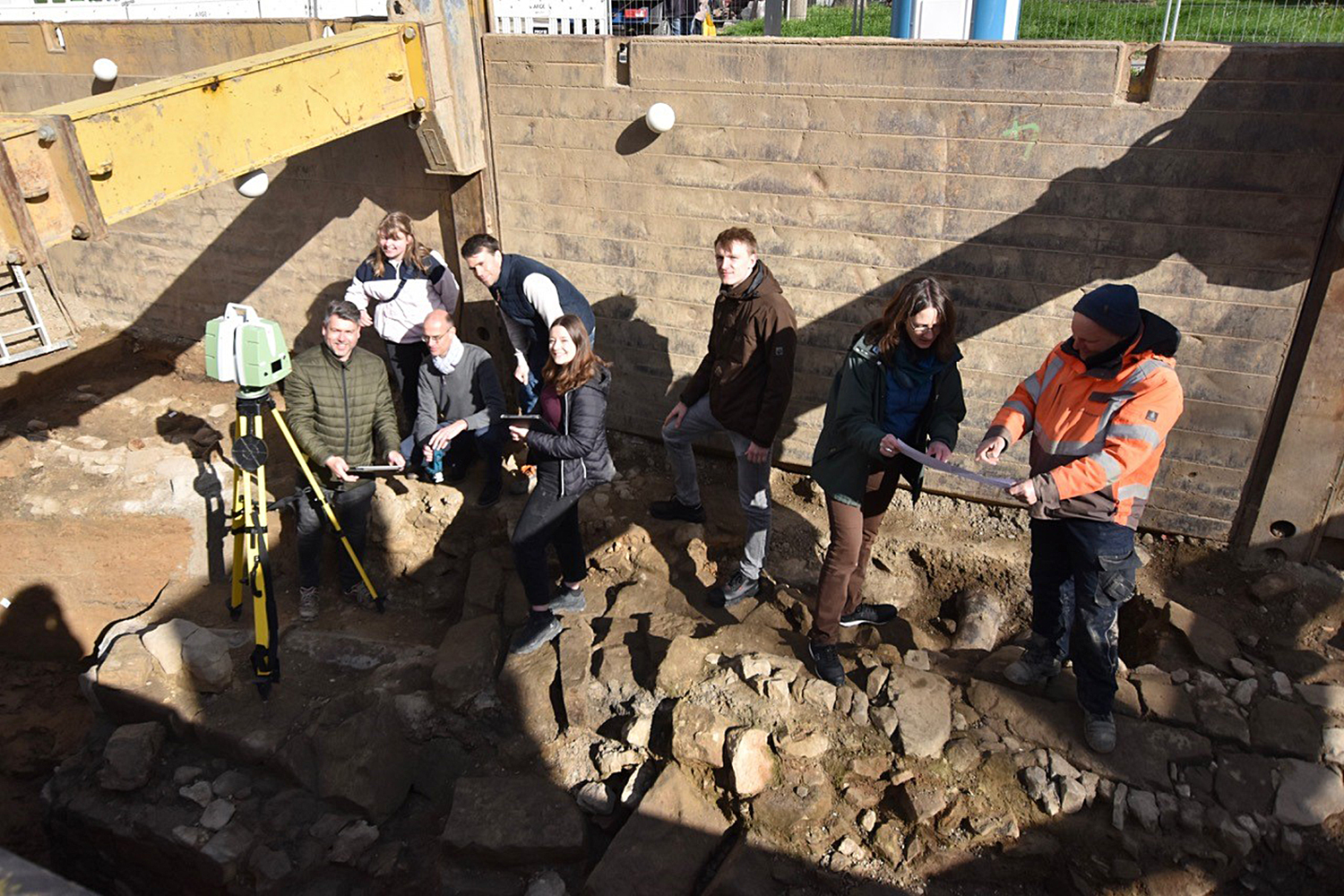A pictorial bridge to the city’s history TU Braunschweig starts archaeological research on the medieval bridge in Hildesheim
Researchers consider the archaeological finding at Hildesheim’s Dammstraße, a stone arch bridge dating back to the 12th century, to be so significant that it is to be documented in great detail and investigated in more detail in terms of its building history. The Institute of Building History at TU Braunschweig will carry out this project starting at the end of April 2023 thanks to special funding from the state’s Ministry of Science and Culture in close cooperation with representatives of the city of Hildesheim and the Lower Saxony State Office for the Preservation of Monuments. The company Archaeo-Firm, which has been commissioned with the excavation, will also accompany the undertaking so that the work can be completed as quickly as possible.

Archaeological research on the medieval bridge in Hildesheim has started. Photo credit: Institute for Building History/TU Braunschweig
The first step will be to use photogrammetry and laser scanning to create a digital model of the stone arch bridge. On this basis, structural details will then be subjected to a deeper analysis. “We have the rare opportunity here to examine the masonry of a high medieval bridge that has lain sealed in the ground for centuries,” says Professor Ulrike Fauerbach from the Institute of Building History. “The fascinating thing is that we can examine not only the medieval building techniques on the bridge. The later changes from the 30 Years’ War, the repairs of the 19th century and the destruction of 1945 can be read from the foundations, almost like a pictorial bridge to Hildesheim’s urban history,” says Priv.-Doz. Dr Markus C. Blaich, Head of the Medieval Archaeology Department at the Lower Saxony State Office for the Preservation of Monuments. “The few bridges that still exist at all in northern Europe from this period have been heavily altered by use, because they were destroyed by natural disasters or in war, for example, and then rebuilt. The Hildesheim bridge is probably still original in its substance,” adds Christoph Salzmann, archaeologist of the city of Hildesheim.
The investigations are expected to yield concrete results on the history and construction of the bridge, and they can also contribute to the basis for further planning. The planned digital model of the bridge findings could be a possible template for a scaled-down model to touch, for example made of bronze. Making the archaeological results tangible in this way should be another attraction from Hildesheim’s rich medieval history, adding an interesting point to the UNESCO World Heritage Site in the triangle of the cathedral, St. Michael’s Church and Roemer-Pelizaeus Museum.
